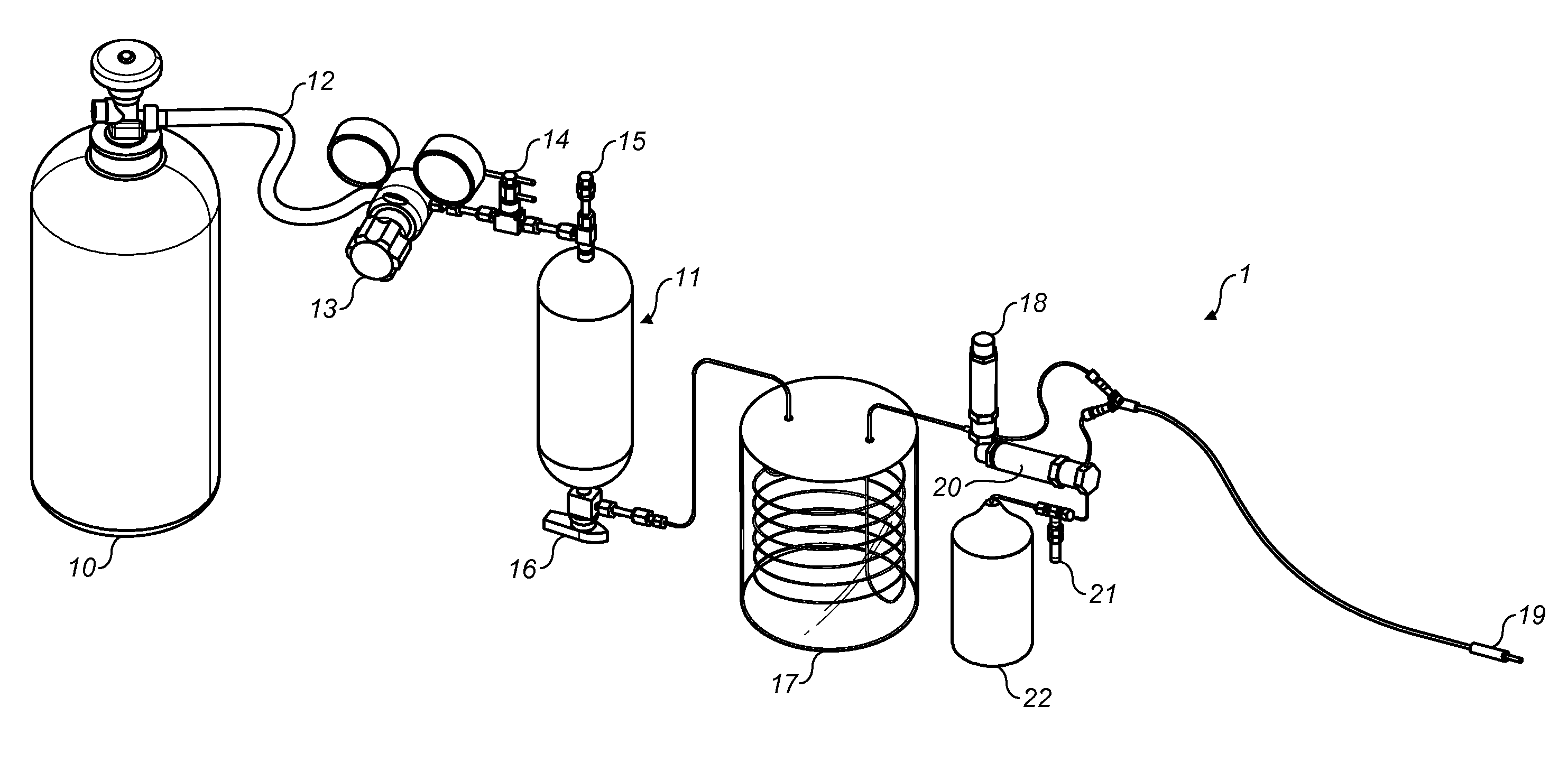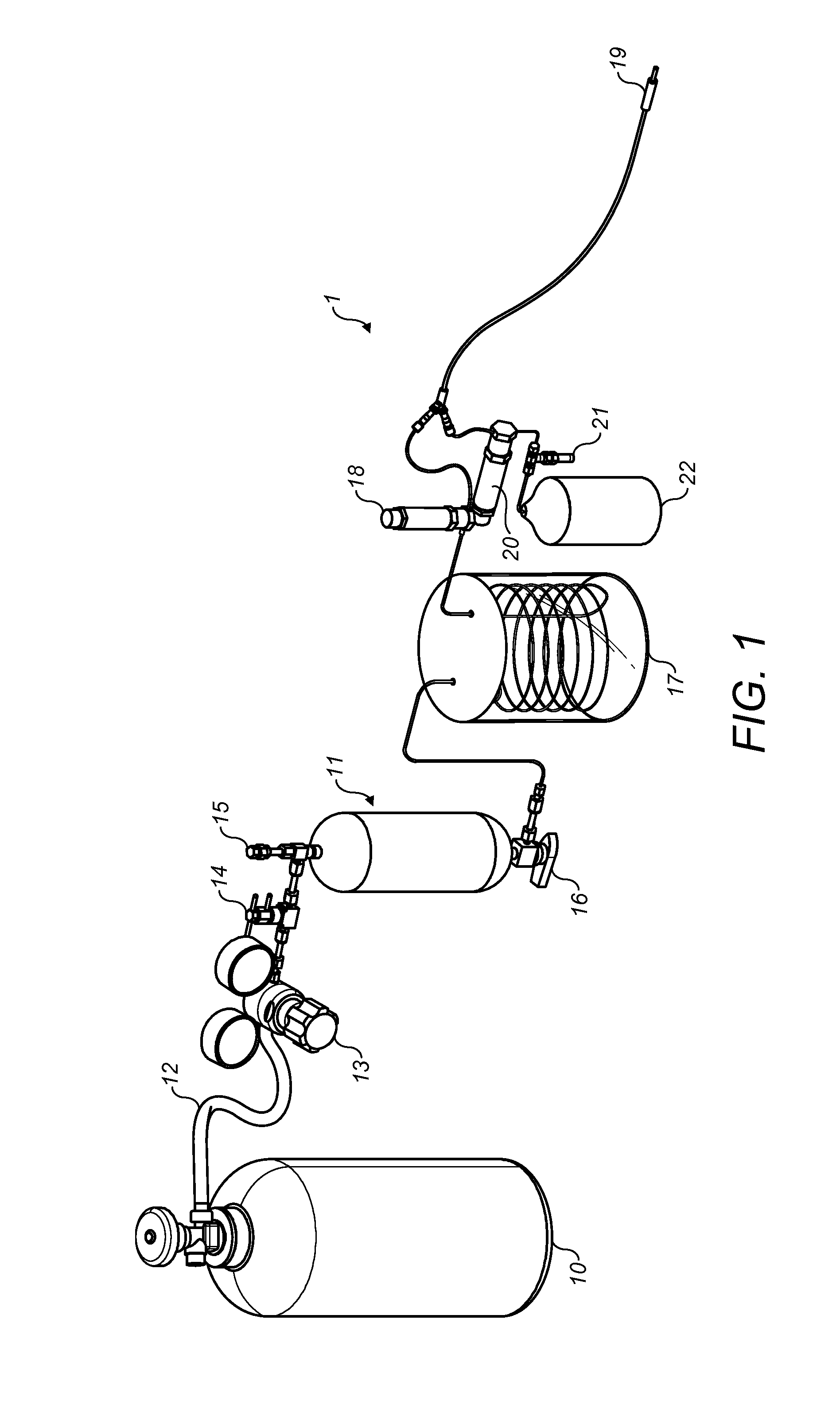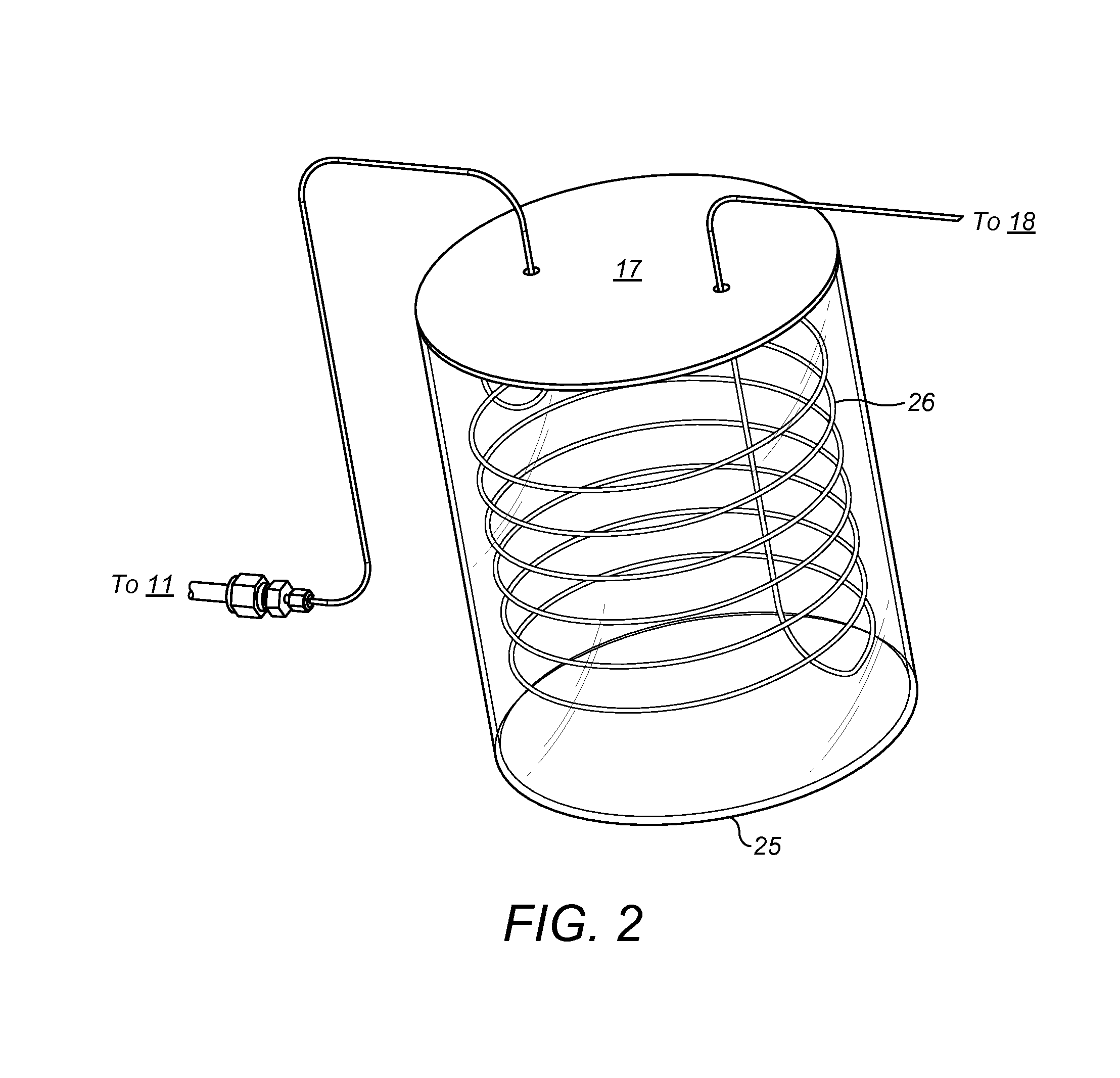Plaque stabilisation using cryoenergy
a technology of cryoenergy and plate, applied in the field of plate stabilisation using cryoenergy, can solve the problems of undesirable and potentially dangerous blockage, subsequent stenosis, and danger of use, and achieve the effects of reducing the risk of thrombosis, and reducing the risk of cryotherapy
- Summary
- Abstract
- Description
- Claims
- Application Information
AI Technical Summary
Benefits of technology
Problems solved by technology
Method used
Image
Examples
Embodiment Construction
[0050]FIG. 1 is an illustration of an exemplary system for supplying cryoenergy to a target part of a vessel. It will be understood that some of the described components are not essential to the operation of the system but are described for context only. Suitable, functionally similar, or equivalent components may be used interchangeably. It is noted that throughout the present description, all pressures given as gauge pressures, that is, above atmospheric pressure.
[0051]The system 1 includes a pressure source 10, which provides pressure to the system, a fluid reservoir 11 which stores refrigerant, a heat exchanger 17 for cooling the pressurised refrigerant and a catheter 19 which is inserted into a vessel to supply cryoenergy to a target. Alternative methods of supplying cryoenergy to a vessel, without the use of a refrigerant, are contemplated and described with references to FIGS. 6a, 6b and 7 below. These include activating an endothermic reaction and controlling a thermoelectri...
PUM
 Login to View More
Login to View More Abstract
Description
Claims
Application Information
 Login to View More
Login to View More - R&D
- Intellectual Property
- Life Sciences
- Materials
- Tech Scout
- Unparalleled Data Quality
- Higher Quality Content
- 60% Fewer Hallucinations
Browse by: Latest US Patents, China's latest patents, Technical Efficacy Thesaurus, Application Domain, Technology Topic, Popular Technical Reports.
© 2025 PatSnap. All rights reserved.Legal|Privacy policy|Modern Slavery Act Transparency Statement|Sitemap|About US| Contact US: help@patsnap.com



